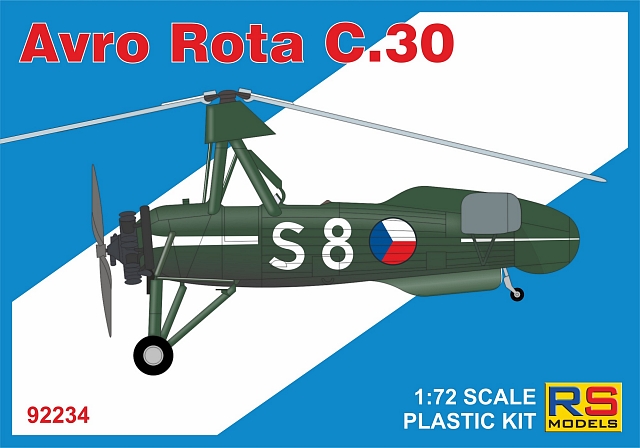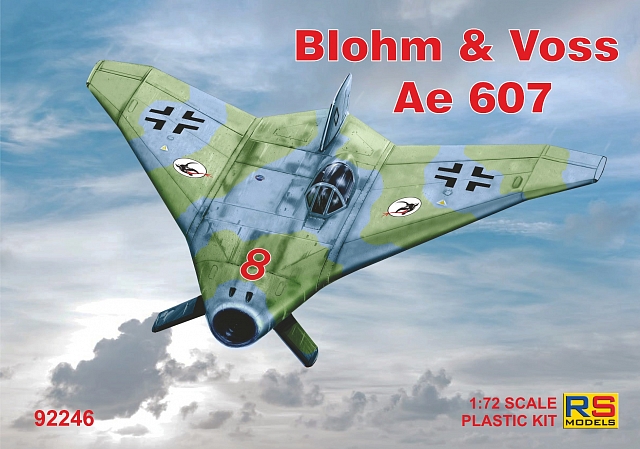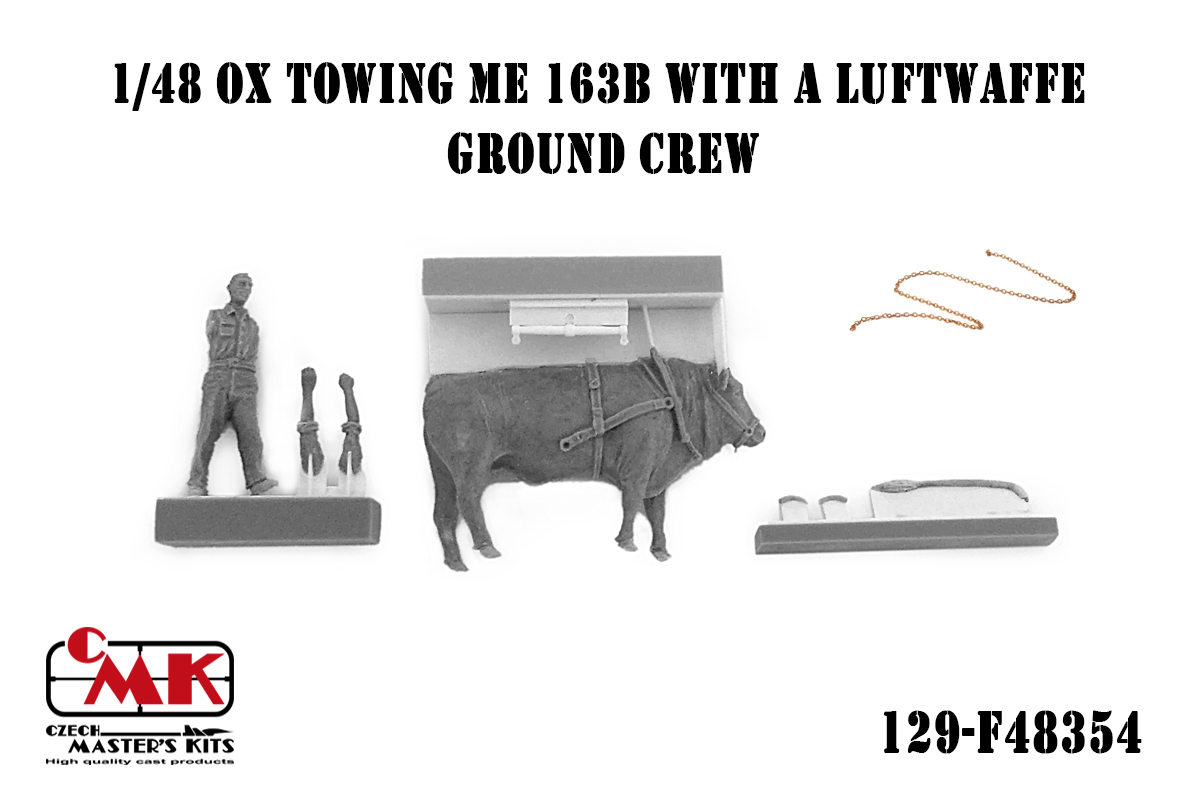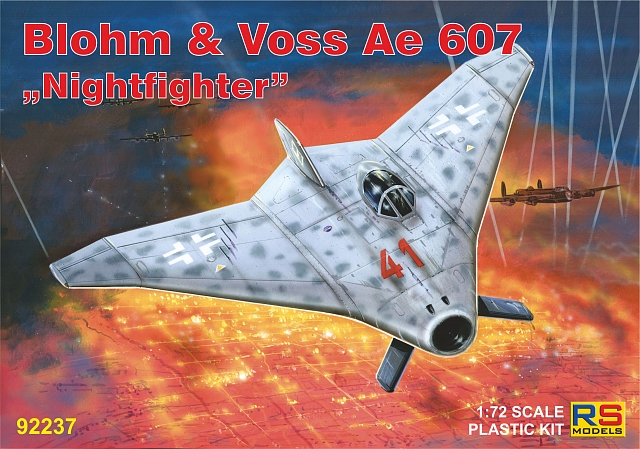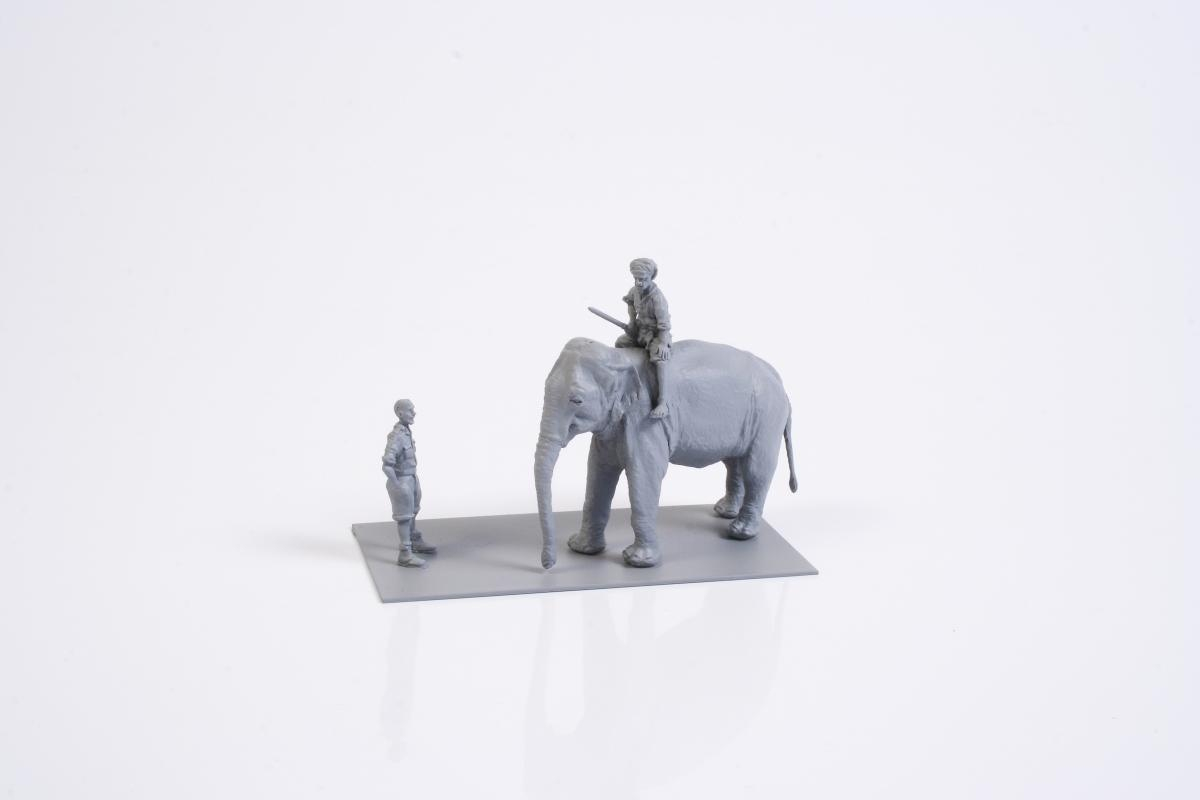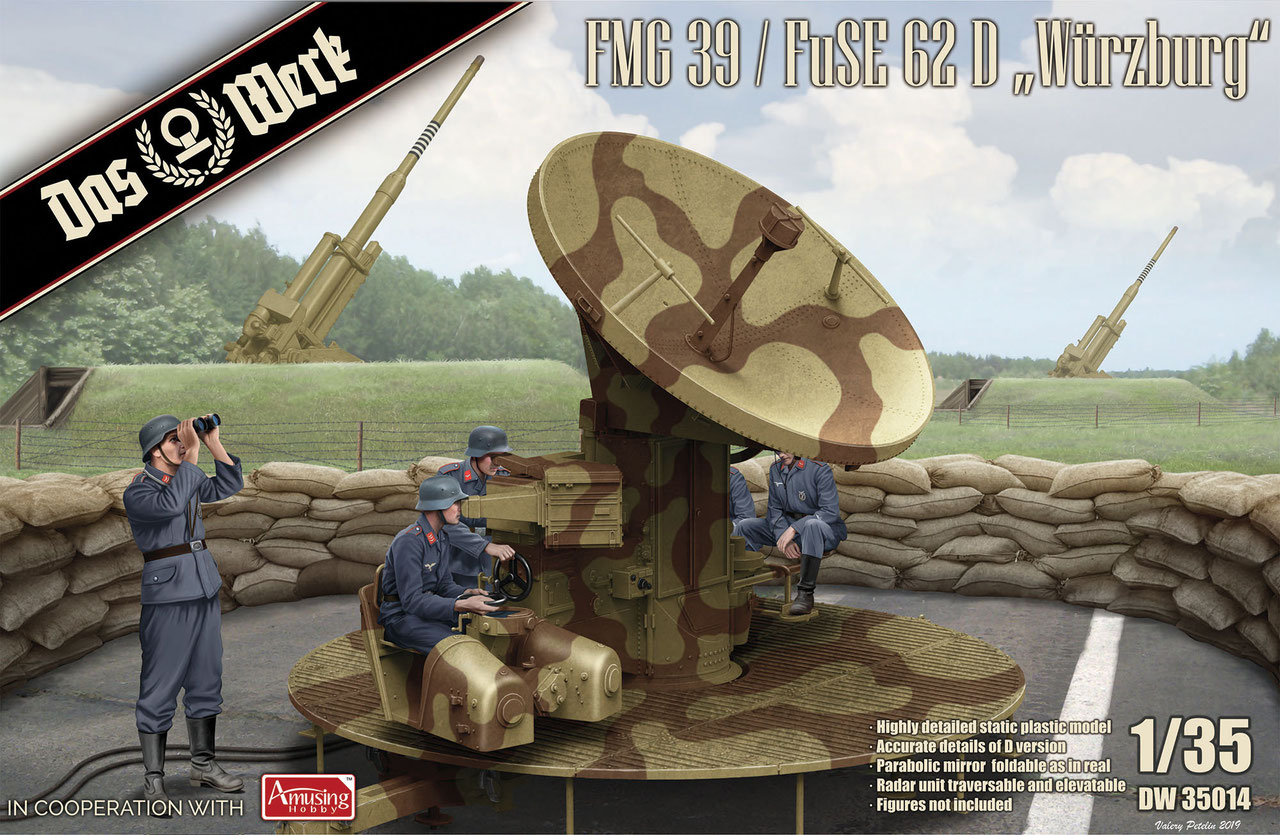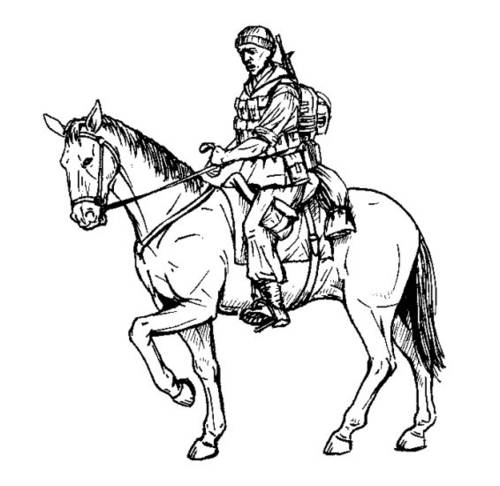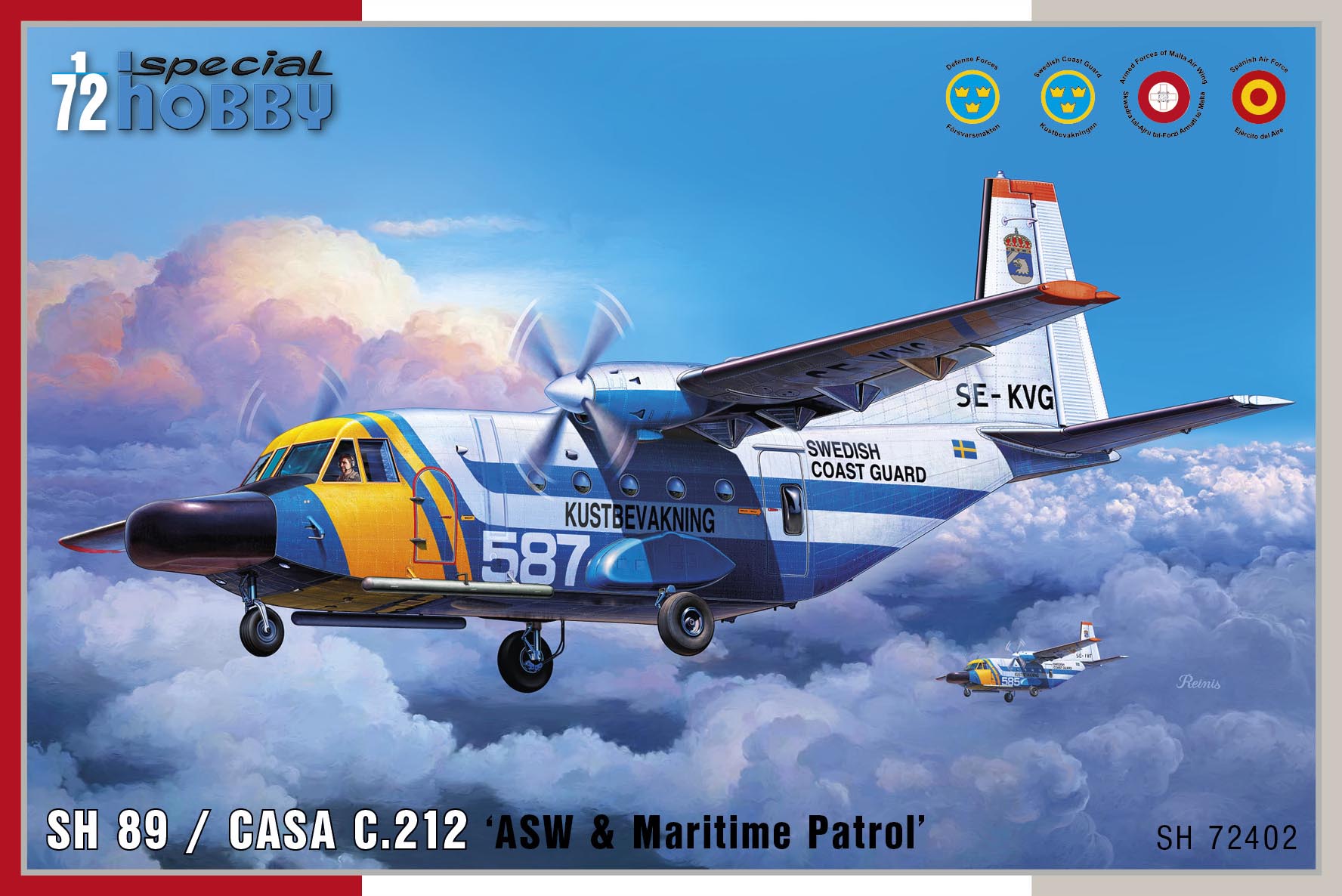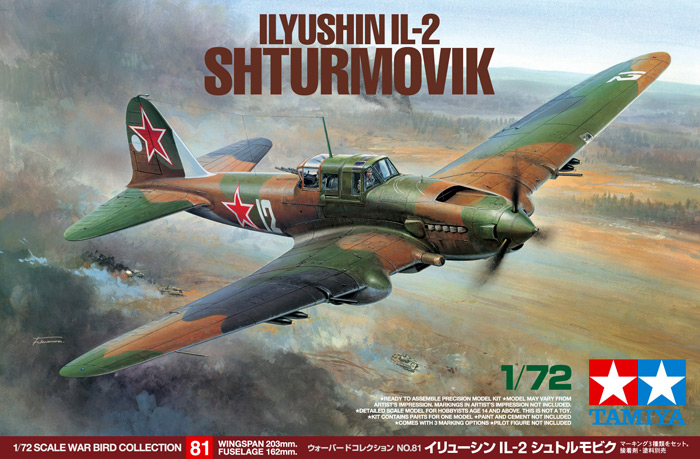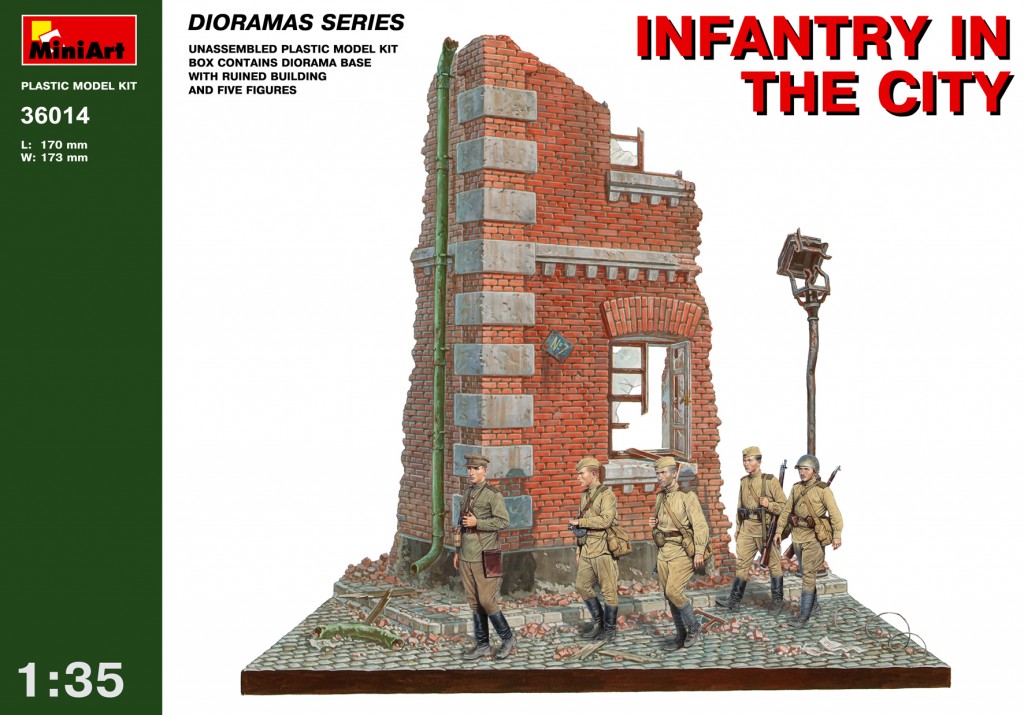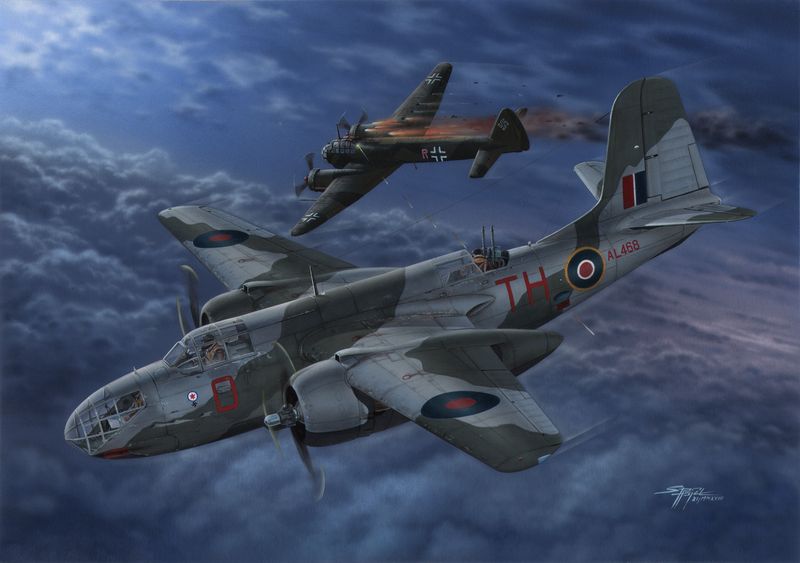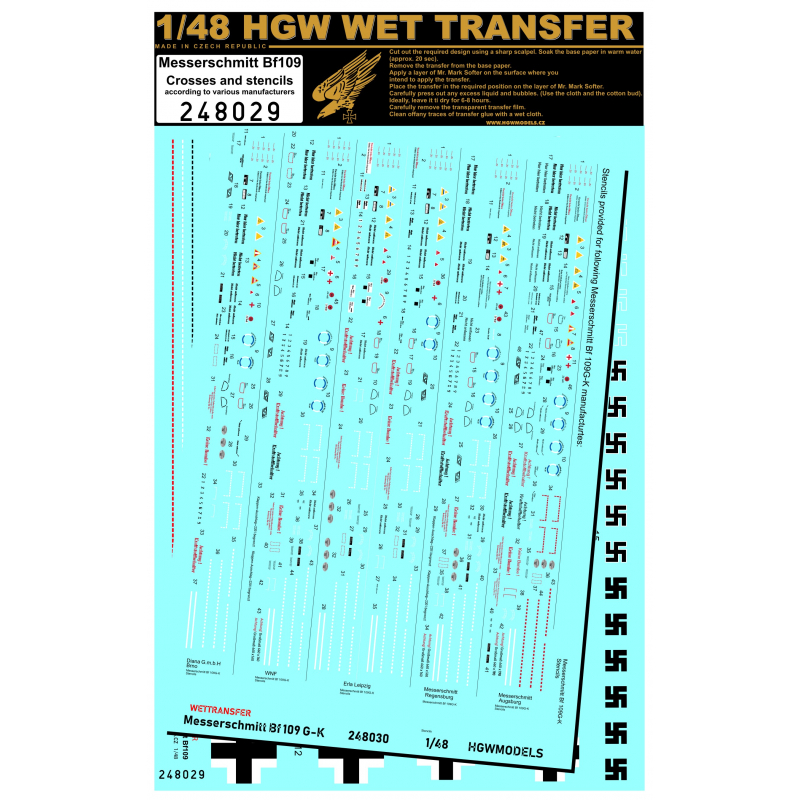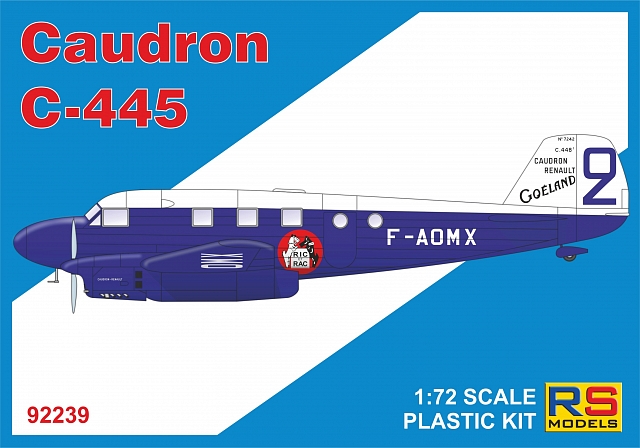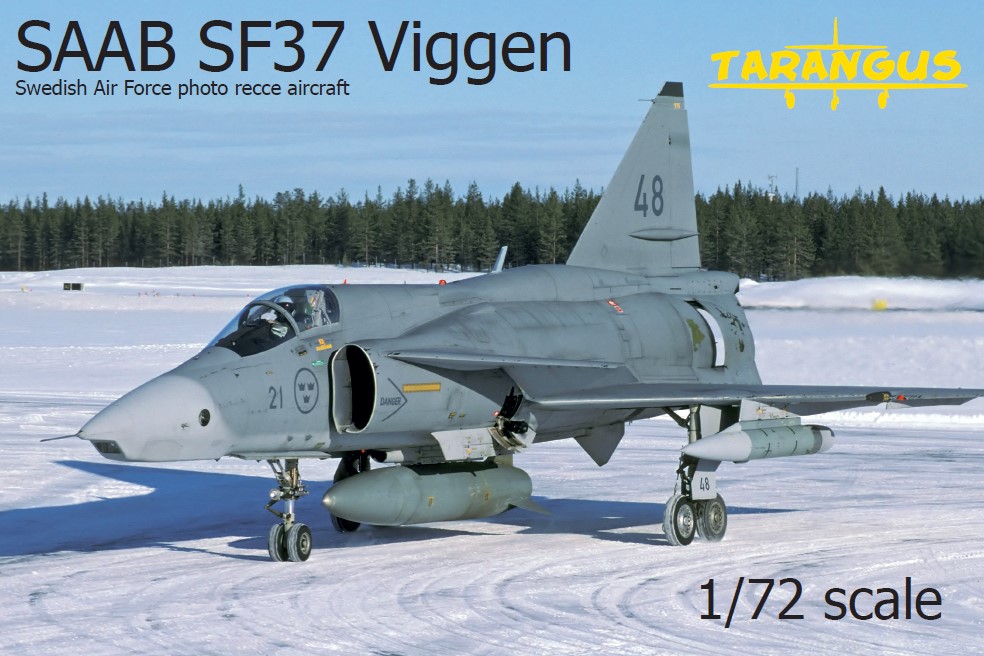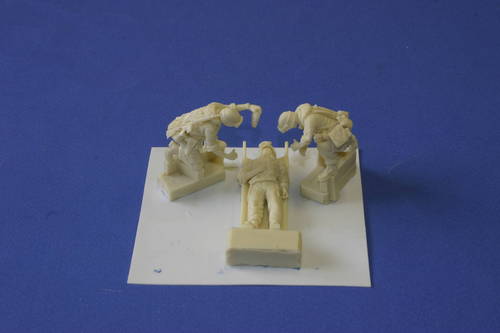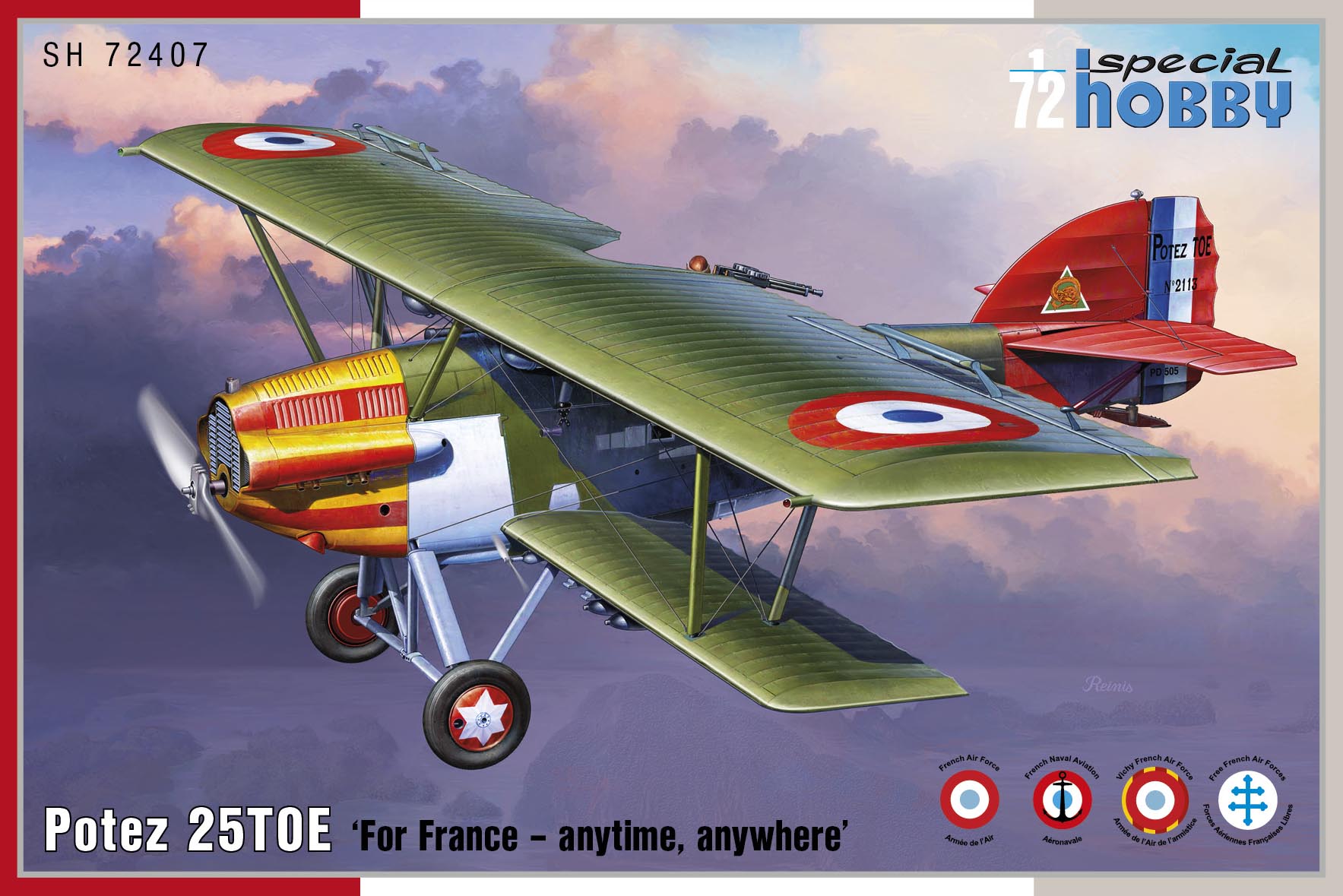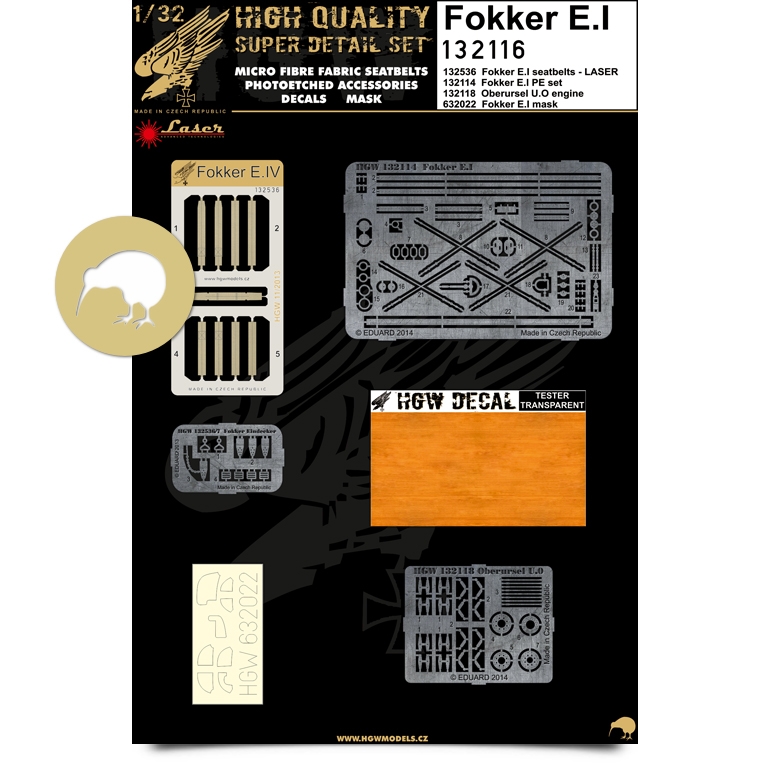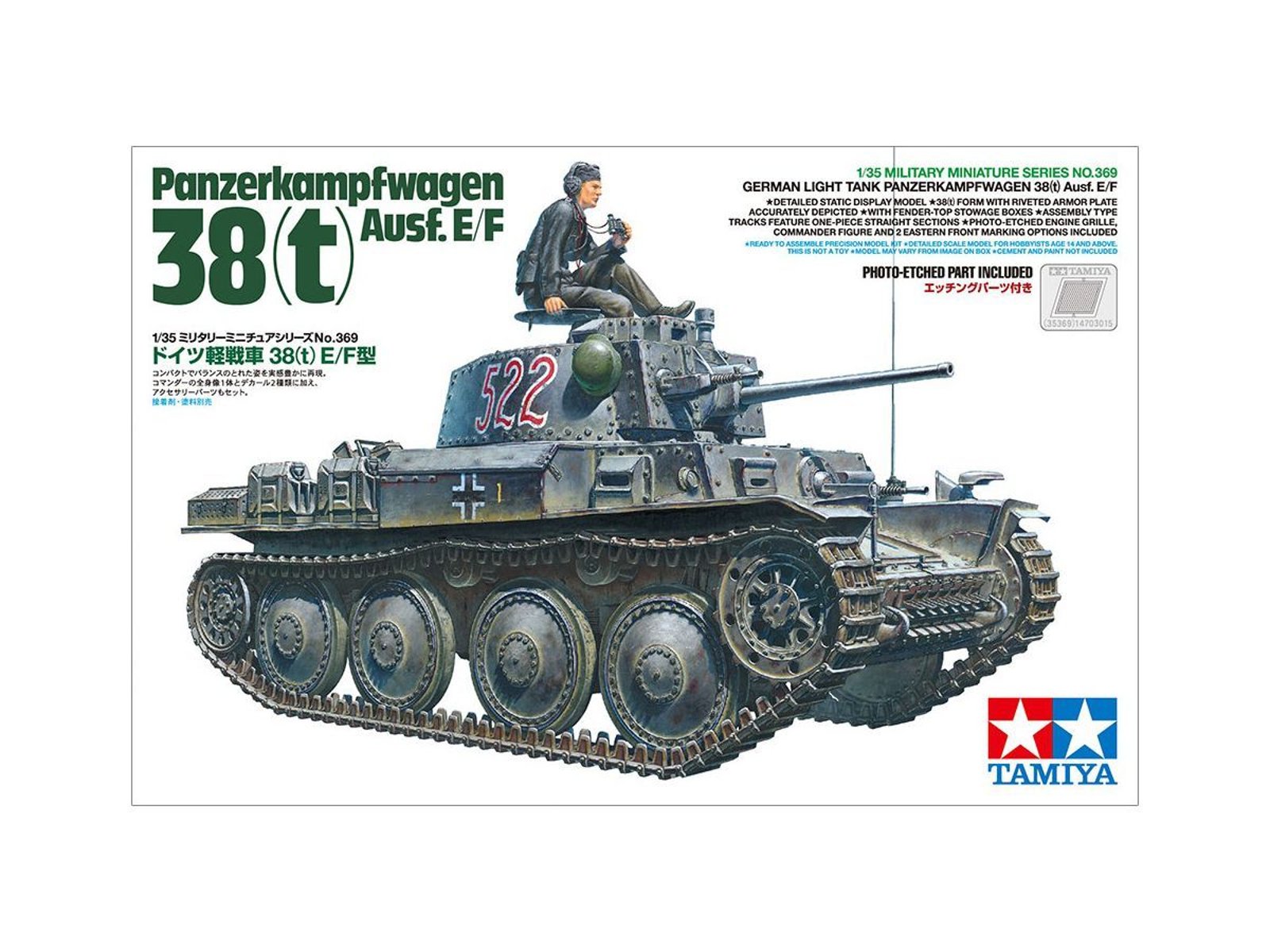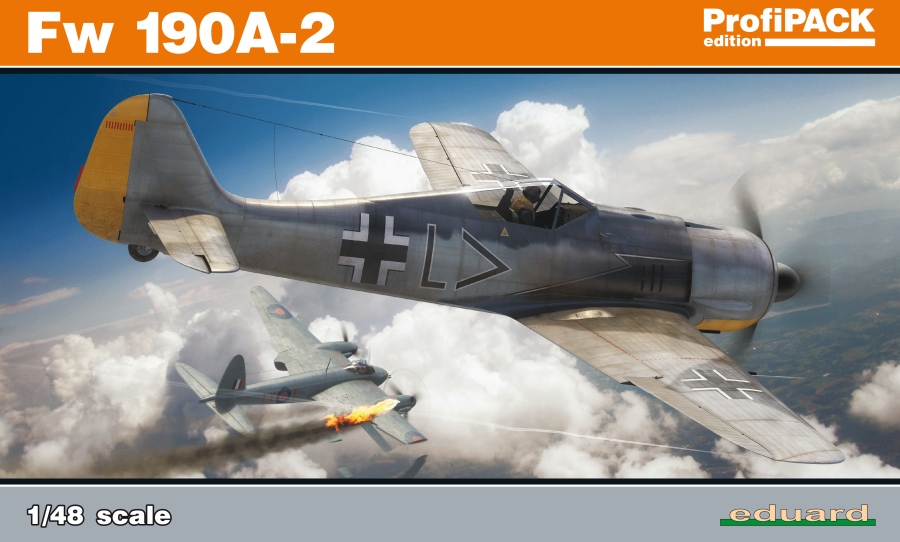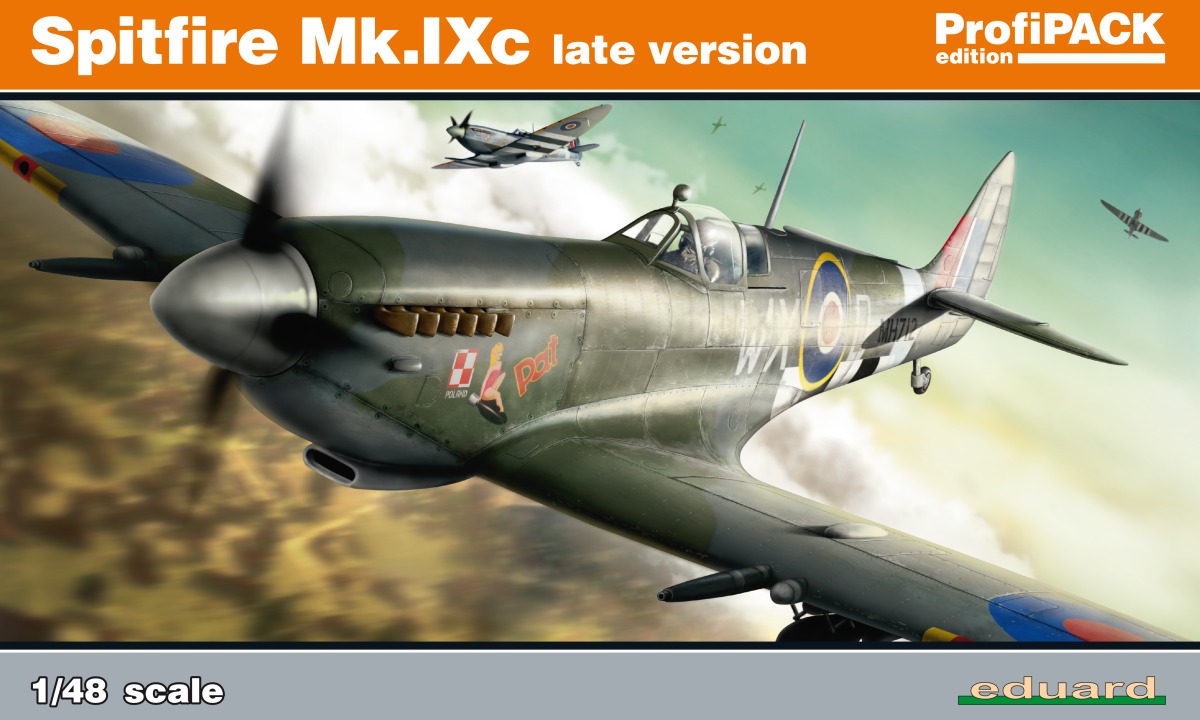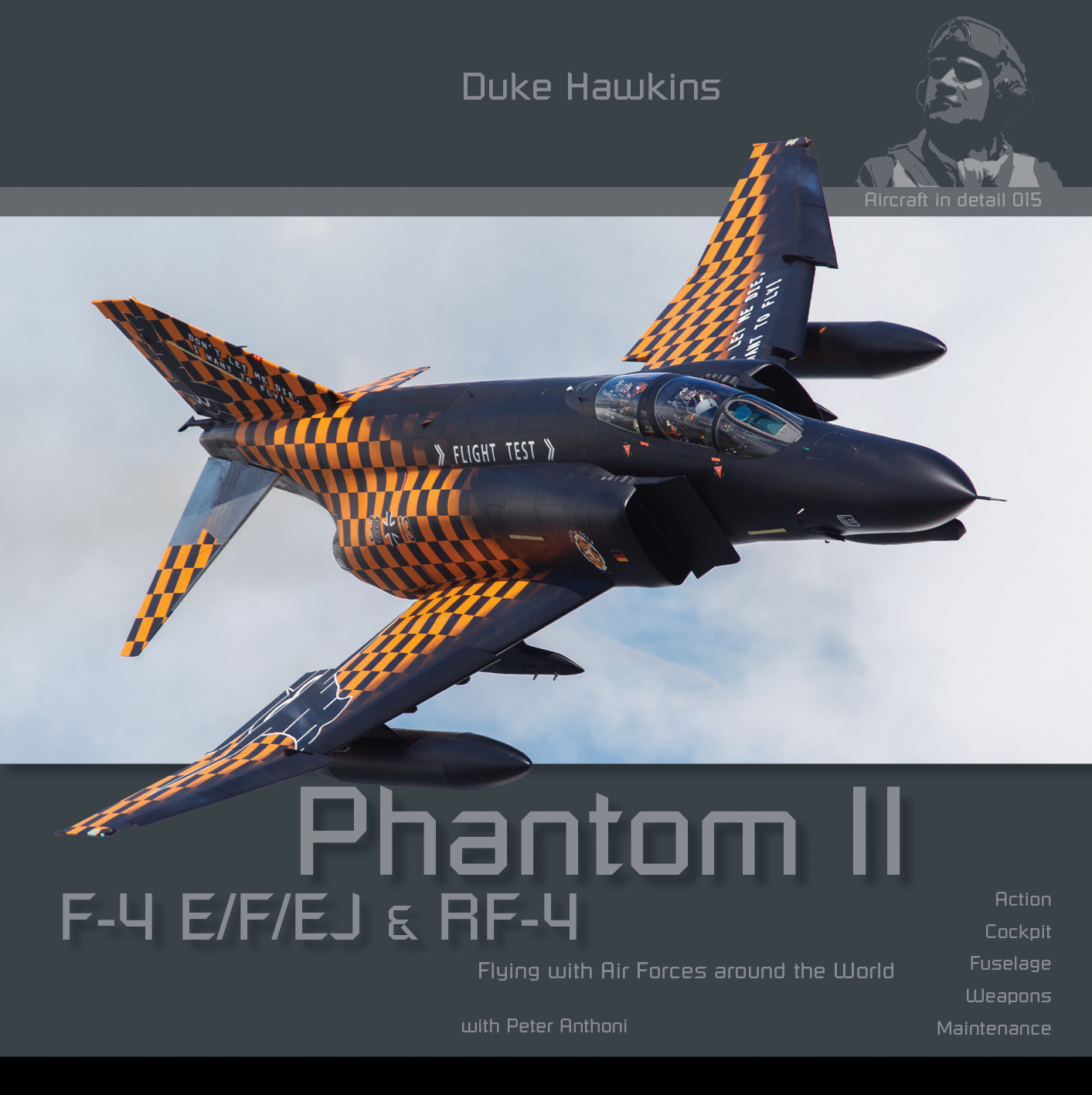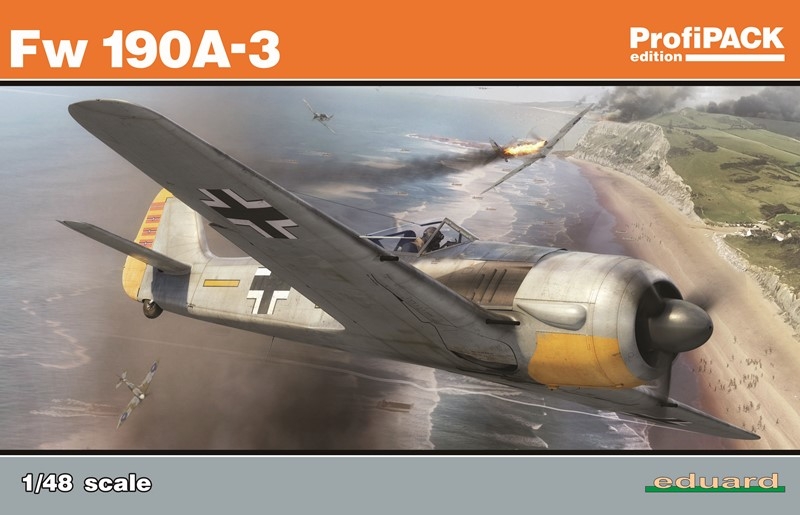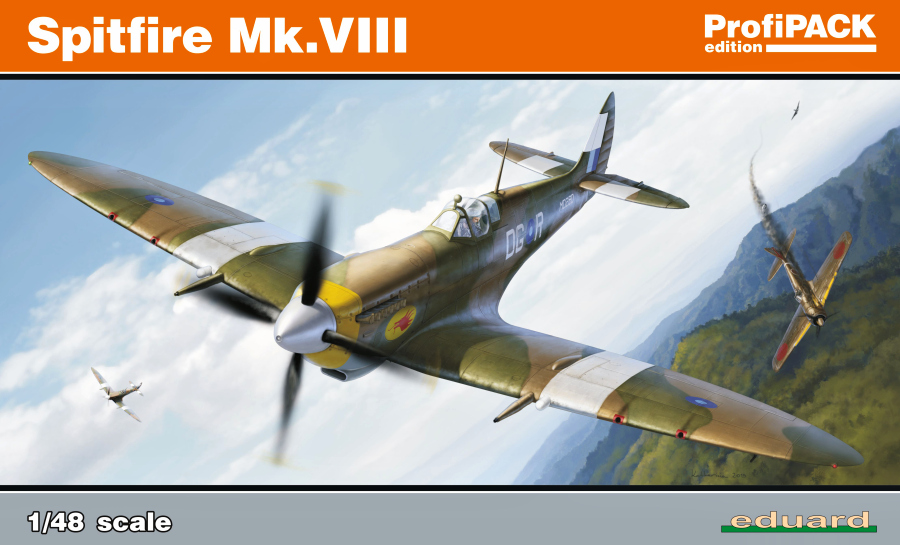Hračky
Celkem 840 produktů
Plastikový model letadla 1/72 Avro Rota C.30A 4 decal v. for Czeczslovak.,RAF, Yugoslavia, Australia. The first production design in the series was the C.30, a radial-engined autogyro with a three-blade, 37 ft (11.3 m) rotor mounted on an aft-leaning tripod, the control column extending into the rear of the two cockpits. The engine was the five-cylinder, 105 hp (78 kW) Armstrong Siddeley Genet Major I used in the C.19 series. The fabric-covered fuselage carried an unbraced tailplane, without elevators but with turned-up tips. The port side of the tailplane had an inverted aerofoil section to counter roll-axis torque produced by the propeller. As with most autogyros, a high vertical tail was precluded by the sagging resting rotor, so the dorsal fin was long and low, extending well aft of the tailplane like a fixed rudder and augmented by a ventral fin. The wide-track undercarriage had a pair of single, wire-braced legs and a small tail wheel was fitted. This model flew in April 1933. It was followed by four improved machines designated C.30P (P here for pre-production) which differed in having a four-legged pyramid rotor mounting and a reinforced undercarriage with three struts per side. The rotor could be folded rearwards for transport. The C.30P used the more powerful (140 hp, 104 kW) seven-cylinder Armstrong Siddeley Genet Major IA radial engine.
Plastikový model letadla 1/72 Avro Rota C.30A 4 decal v. for Czeczslovak.,RAF, Yugoslavia, Australia. The first production design in the series was the C.30, a radial-engined autogyro with a three-blade, 37 ft (11.3 m) rotor mounted on an aft-leaning tripod, the control column extending into the rear of the two cockpits. The engine was the five-cylinder, 105 hp (78 kW) Armstrong Siddeley Genet Major I used in the C.19 series. The fabric-covered fuselage carried an unbraced tailplane, without elevators but with turned-up tips. The port side of the tailplane had an inverted aerofoil section to counter roll-axis torque produced by the propeller. As with most autogyros, a high vertical tail was precluded by the sagging resting rotor, so the dorsal fin was long and low, extending well aft of the tailplane like a fixed rudder and augmented by a ventral fin. The wide-track undercarriage had a pair of single, wire-braced legs and a small tail wheel was fitted. This model flew in April 1933. It was followed by four improved machines designated C.30P (P here for pre-production) which differed in having a four-legged pyramid rotor mounting and a reinforced undercarriage with three struts per side. The rotor could be folded rearwards for transport. The C.30P used the more powerful (140 hp, 104 kW) seven-cylinder Armstrong Siddeley Genet Major IA radial engine.
Plastikový model letadla 1/72 Blohm and Voss Ae 607 4 decal v. for Luftwaffe, Great Britain. Early in 1945, a Blohm & Voss (B&V) aircraft designer called Thieme began work on Drawing Number Ae 607, within the standard drawing numbering system at B&V. His design for a jet fighter was radically different from anything that B&V had done before. A flying wing, it approximated to a 45° delta planform. Reports of its existence were not confirmed until 2017, when the drawing was published. No Project number is recorded for the design and its intended status is unknown.[
1/48 Ox Towing Me 163B with a Luftwaffe Ground Crew. At the final stages of WW2, the Third Reich faced serious shortage of fuel and to save the maximum amount possible, draft animals were used for taxiing aircraft on airfields, too. Even the most advanced jet and rocket-powered military aircraft such as the Me 262 or Me 163 were often seen in 1945 being towed like a mere middle ages style ox cart. This set contains a figure of a Luftwaffe groundcrew with a draft animal ready to tow a Me 163 Komet on the airfield (the figures have been sculpted based on a period photo. However, a photo of a Bf 109G being towed by such poor animal exists too). The draft animal offered in our set can be used in any other type of diorama as well. Country: Germany / WWII
1/32 Luftwaffe Ground Crew Pulling V1 on Trolley . To accompany our Fieseler Fi 103/ V-1 a SH32074 Fi 103A-1/ Re 4 Reichenberg model kits, our designers have sculpted two Luftwaffe ground crew member figures who are, in quite a relaxed manner, pulling a trolley with the V1 missile. This set can be utilized in a differend kind of diorama, too. Nationality: Germany / WWII
Plastikový model letadla 1/72 Blohm & Voss Ae 607 "Nightfighter" 4 decal v. for Luftwaffe. This flying wing fighter was only a study and was not included on the Project list. Because the HeS 011 jet engine was chosen as the power plant, the cockpit had to be moved off-center. The wing had a compound sweep, starting at 65 degrees and changing to 55 degrees. There were two fuel tanks, located in tandem on the starboard side of the air intake. Three MK 108 30 mm cannon were planned for the armament.
Plastikový model letadla 1/72 Blohm & Voss Ae 607 "Nightfighter" 4 decal v. for Luftwaffe. This flying wing fighter was only a study and was not included on the Project list. Because the HeS 011 jet engine was chosen as the power plant, the cockpit had to be moved off-center. The wing had a compound sweep, starting at 65 degrees and changing to 55 degrees. There were two fuel tanks, located in tandem on the starboard side of the air intake. Three MK 108 30 mm cannon were planned for the armament.
1/35 FMG 39 / FuSE 62 D Würzburg. Mobiles Funk-Messgerät / Flak-Messgerät / Funk-Sende-Empfangsgerät German WW2 Gun Laying Radar Product Details Highly detailed static plastic model Accurate details of D version Parabolic mirror foldable as in real Radar unit traversable and elevatable Finest bolt details Dipol DE 62 additional antennae included
1/35 FMG 39 / FuSE 62 D Würzburg. Mobiles Funk-Messgerät / Flak-Messgerät / Funk-Sende-Empfangsgerät German WW2 Gun Laying Radar Product Details Highly detailed static plastic model Accurate details of D version Parabolic mirror foldable as in real Radar unit traversable and elevatable Finest bolt details Dipol DE 62 additional antennae included
Plastikový model letadla 1/72 SH 89 / CASA C.212 'ASW & Maritime Patrol' . The CASA C.212 is a Spanish turboprop-powered STOL cargo aircraft that has seen service with a wide range of countries and flew in many different roles, one of them being maritime surveillance and patrol. Machines fitted for this sort of tasks carry radar antennae in distinctive, duck beak like shaped radomes at the front of the fuselage as well as some more electronics equipment within the airframe. Highly accurate and nicely detailed model Precisely designed sheet of decals offering markings for two Swedish airframes in different colour schemes, one Malta-based machine and a Spanish one. Specific antenna arrays made of resin and photo-etches Double-slotted wing flaps – resin set no.7407 – is recommended for discerning modeller
Plastikový model letadla 1/48 Reggiane Re 2000 I. Serie. Just before the outbreak of WW2, the Reggiane Re 2000 took part in the competition for the standard fighter which was to serve with the Italian air force. Even though the type offered quite high performance, it eventually did not win, so the most of the production was offered for export. The Regia Aeronautica, however, decided to give the type a try and deployed it mainly in the dangerous operations against Malta. The model kit contains four styrene sprues and one with clear parts. The wing sprue has its origins in the Classic Airframes kit while all the other components are brand new, the small ones being produced from metal moulds. Italian WW2 fighter aeroplane three eye-catching marking options bearing the Italian mottle camouflage pattern we also offer separate resin sets and pre-cut masks
Plastikový model letadla 1/48 Reggiane Re 2000 I. Serie. Just before the outbreak of WW2, the Reggiane Re 2000 took part in the competition for the standard fighter which was to serve with the Italian air force. Even though the type offered quite high performance, it eventually did not win, so the most of the production was offered for export. The Regia Aeronautica, however, decided to give the type a try and deployed it mainly in the dangerous operations against Malta. The model kit contains four styrene sprues and one with clear parts. The wing sprue has its origins in the Classic Airframes kit while all the other components are brand new, the small ones being produced from metal moulds. Italian WW2 fighter aeroplane three eye-catching marking options bearing the Italian mottle camouflage pattern we also offer separate resin sets and pre-cut masks
1/72 Il-2 Tamiya. Vzdušné brnění v dlani Iljušin IL-2 Šturmovik byl během druhé světové války hlavním pozemním útočným letounem ruské armády a do konce války bylo vyrobeno více než 36 000 příkladů. Výroba jednomístné verze IL-2 byla zahájena v březnu 1941, ale velké ztráty vedly k vývoji dvoumístné verze se zadním střelcem. Na konci roku 1943 byla představena verze, která obsahovala části vnějšího křídla, které se posunuly zpět o 15 stupňů pro lepší těžiště. Spolu s tankem T-34 Il-2 významně přispěl k případnému ruskému vítězství. O modelu Plastiková stavebnice modelu Ilyushin IL-2 Shturmovik v měřítku 1/72. Délka: 162 mm Šířka: 203 mm. Přesně reprodukuje robustní tvar letadla a nabízí snadnou montáž. Sací potrubí, stejně jako části chladiče a chladiče oleje umožňují přesnou reprodukci mechanismu chladiče. Dvoumístný kokpit a otvor pro kola mají také bohatou povrchovou úpravu. Zahrnuje dva typy kapotáže děla 23 mm. Zahrnuty jsou také díly pro 100 kg a 250 kg bomby a tři typy odpalovacích kolejnic pro rakety RS-132. Vyberte si ze tří typů označení.
1/72 Il-2 Tamiya. Vzdušné brnění v dlani Iljušin IL-2 Šturmovik byl během druhé světové války hlavním pozemním útočným letounem ruské armády a do konce války bylo vyrobeno více než 36 000 příkladů. Výroba jednomístné verze IL-2 byla zahájena v březnu 1941, ale velké ztráty vedly k vývoji dvoumístné verze se zadním střelcem. Na konci roku 1943 byla představena verze, která obsahovala části vnějšího křídla, které se posunuly zpět o 15 stupňů pro lepší těžiště. Spolu s tankem T-34 Il-2 významně přispěl k případnému ruskému vítězství. O modelu Plastiková stavebnice modelu Ilyushin IL-2 Shturmovik v měřítku 1/72. Délka: 162 mm Šířka: 203 mm. Přesně reprodukuje robustní tvar letadla a nabízí snadnou montáž. Sací potrubí, stejně jako části chladiče a chladiče oleje umožňují přesnou reprodukci mechanismu chladiče. Dvoumístný kokpit a otvor pro kola mají také bohatou povrchovou úpravu. Zahrnuje dva typy kapotáže děla 23 mm. Zahrnuty jsou také díly pro 100 kg a 250 kg bomby a tři typy odpalovacích kolejnic pro rakety RS-132. Vyberte si ze tří typů označení.
Plastikový model letadla 1/72 SH 89 / CASA C.212 'ASW & Maritime Patrol' . The CASA C.212 is a Spanish turboprop-powered STOL cargo aircraft that has seen service with a wide range of countries and flew in many different roles, one of them being maritime surveillance and patrol. Machines fitted for this sort of tasks carry radar antennae in distinctive, duck beak like shaped radomes at the front of the fuselage as well as some more electronics equipment within the airframe. Highly accurate and nicely detailed model Precisely designed sheet of decals offering markings for two Swedish airframes in different colour schemes, one Malta-based machine and a Spanish one. Specific antenna arrays made of resin and photo-etches Double-slotted wing flaps – resin set no.7407 – is recommended for discerning modeller
Plastikový model letadla 1/72 Boston MK.III Intruder. Model of the US WW2 two-engined aircraft in a version used by the British in the night fighter and intruder roles. The kit consists of seven styrene sprues which feature also the underbelly machine gun pod for the Intruder machines and the Havoc Mk.II night fighter style nose section, one clear styrene sprue, decal sheet, resin parts and photo etches. this version has never been kitted before decals cater for four marking schemes, two Intruders and two Havoc Mk.III‘s photo etched antenna array parts finely detailed Hedgehog style exhausts Country of origin: UK / WWII
Plastikový model letadla 1/72 Boston MK.III Intruder. Model of the US WW2 two-engined aircraft in a version used by the British in the night fighter and intruder roles. The kit consists of seven styrene sprues which feature also the underbelly machine gun pod for the Intruder machines and the Havoc Mk.II night fighter style nose section, one clear styrene sprue, decal sheet, resin parts and photo etches. this version has never been kitted before decals cater for four marking schemes, two Intruders and two Havoc Mk.III‘s photo etched antenna array parts finely detailed Hedgehog style exhausts Country of origin: UK / WWII
1/48 Messerschmitt Bf109 Crosses + Stencils - Wet Transfers - various manufacturers. Crosses and stencils for Messerschmitt Bf109 in 1/48 scale. Wet transfer technology means that decal doesn't leave any signs of varnish or typical film after its application, so only text or symbols stay attached to the surface. The biggest issue relating to using ordinary decals is the varnish which creates a glossy film around the decal. It is quite hard to work with classic decals the way to make this film invisible and it is impossible to reach a good result in case of metallic surfaces. OK, there are dry transfers on the market but work with them is also quite uncomfortable, it is hard to place them correctly and a modeler has the one chance only. HGW's wet transfers are similar to ordinary decals. It is possible to move them during the attaching process and find the best position. Then just push the water from below the transfer, let it dry few hours, remove the transfer foil and work is done. Only text or symbol stays attached to the surface. Instructions: 1. Cut the required part.2. Soak in hot water and wait till the decal loose its base-paper.3. Apply as regular decal.4. Push the water from below the decal.5. Let it dry for 2-3 hours.6. Remove the transfer foil and clean the glue stains with water.
1/48 Messerschmitt Bf109 Crosses + Stencils - Wet Transfers - various manufacturers. Crosses and stencils for Messerschmitt Bf109 in 1/48 scale. Wet transfer technology means that decal doesn't leave any signs of varnish or typical film after its application, so only text or symbols stay attached to the surface. The biggest issue relating to using ordinary decals is the varnish which creates a glossy film around the decal. It is quite hard to work with classic decals the way to make this film invisible and it is impossible to reach a good result in case of metallic surfaces. OK, there are dry transfers on the market but work with them is also quite uncomfortable, it is hard to place them correctly and a modeler has the one chance only. HGW's wet transfers are similar to ordinary decals. It is possible to move them during the attaching process and find the best position. Then just push the water from below the transfer, let it dry few hours, remove the transfer foil and work is done. Only text or symbol stays attached to the surface. Instructions: 1. Cut the required part.2. Soak in hot water and wait till the decal loose its base-paper.3. Apply as regular decal.4. Push the water from below the decal.5. Let it dry for 2-3 hours.6. Remove the transfer foil and clean the glue stains with water.
Plastikový model letadla 1/72 Caudron C-445/448 4 decal v. for France, Spain. Caudron C-455 was a conventionally configured low-wing cantilever monoplane with tailwheel undercarriage. The main undercarriage units retracted into the engine nacelles. Construction was wooden throughout, with wooden skinning everywhere but the forward and upper fuselage sections, which were skinned in metal. As usually configured, the cabin seated six passengers with baggage compartments fore and aft, and a toilet aft. 4 decal variants1. Caudron 448 Goéland, N°7272 F-AOMX, Course Paris-Saïgon, 1936 2. Caudron 445 Goéland, N°8712, GC I/55, France, June 1940 3. Caudron 445 Goéland, 2T-11, Mouzaiaville, Algeria, June 1944 4. Caudron 448 Goéland, N°7272, ex. F-AOMX, Grupo de Caza 26, 1937
Plastikový model letadla 1/72 Caudron C-445/448 4 decal v. for France, Spain. Caudron C-455 was a conventionally configured low-wing cantilever monoplane with tailwheel undercarriage. The main undercarriage units retracted into the engine nacelles. Construction was wooden throughout, with wooden skinning everywhere but the forward and upper fuselage sections, which were skinned in metal. As usually configured, the cabin seated six passengers with baggage compartments fore and aft, and a toilet aft. 4 decal variants1. Caudron 448 Goéland, N°7272 F-AOMX, Course Paris-Saïgon, 1936 2. Caudron 445 Goéland, N°8712, GC I/55, France, June 1940 3. Caudron 445 Goéland, 2T-11, Mouzaiaville, Algeria, June 1944 4. Caudron 448 Goéland, N°7272, ex. F-AOMX, Grupo de Caza 26, 1937
Plastikový model letadla 1/72 Potez 25 TOE - 'For France - any time, any where'. The Potez 25 biplanes enjoyed long and faithful service with the French military, it lasted from the 1920s until the end of WW2. The TOE version of the biplane was primarily destined to fly in the France’s overseas colonies. The kit offers four interesting and colourful scheme options, a Vichy machine boasting distinctive red-yellow stripes which saw service in French Indochina in 1942, a pre-war airframe with white stripes on its top wing, an Aeronavale machine which was operated over mainland France in 1940 and finally a Free French Potez as used in Syria in 1944. highly accurate and nicely detailed model four machines illustrating the type’s long service for France meticulously designed decal sheet photo-etched parts are included too Operators: France/pre WWII-WWII
Plastikový model letadla 1/72 Potez 25 TOE - 'For France - any time, any where'. The Potez 25 biplanes enjoyed long and faithful service with the French military, it lasted from the 1920s until the end of WW2. The TOE version of the biplane was primarily destined to fly in the France’s overseas colonies. The kit offers four interesting and colourful scheme options, a Vichy machine boasting distinctive red-yellow stripes which saw service in French Indochina in 1942, a pre-war airframe with white stripes on its top wing, an Aeronavale machine which was operated over mainland France in 1940 and finally a Free French Potez as used in Syria in 1944. highly accurate and nicely detailed model four machines illustrating the type’s long service for France meticulously designed decal sheet photo-etched parts are included too Operators: France/pre WWII-WWII
1/32 Fokker E.I - Super Detail Set - Photo-etched Sets - Wingnut Wings. Highly detailed set suitable for Fokker E.I by Wingnut Wings in 1/32 scale. Pack contains unique textile seatbelts made from real micro fibre; photo etched parts developed in cooperation with Eduard company and also masks for more comfortable painting. HGW Models Super Detail Set in 1:32 scale - this set is designed for Wingnut Wings kits photo-etched parts were developed in cooperation with Eduard company contains (check accessories for more info): - 132536 Fokker E.I seatbelts - LASER - 132114 Fokker E.I PE set - 132118 Oberursel U.0 PE set - 632022 Fokker E.I MASK - HGW Decal - Light Wood (tester)
1/32 Fokker E.I - Super Detail Set - Photo-etched Sets - Wingnut Wings. Highly detailed set suitable for Fokker E.I by Wingnut Wings in 1/32 scale. Pack contains unique textile seatbelts made from real micro fibre; photo etched parts developed in cooperation with Eduard company and also masks for more comfortable painting. HGW Models Super Detail Set in 1:32 scale - this set is designed for Wingnut Wings kits photo-etched parts were developed in cooperation with Eduard company contains (check accessories for more info): - 132536 Fokker E.I seatbelts - LASER - 132114 Fokker E.I PE set - 132118 Oberursel U.0 PE set - 632022 Fokker E.I MASK - HGW Decal - Light Wood (tester)
1/35 Panzerkampfwagen 38(t) Ausf.E/F. This is an injection-plastic military vehicle model kit. From Tamiya: After the effective annexation of Czechoslovakia by Nazi Germany in 1939, German forces were interested enough in the native Czech LTvz38 light tank that they took it on and ordered production under their own categorization of 38(t), a light tank with riveted, welded armor and a perky 3.7cm gun. Early production 38(t)s took part in the early German offensives of the war, and the 38(t) underwent continued development with 1,400 produced in total. Ausf.E and F 38(t)s had additional armor across the vehicle for better survivability and were deployed during the early stages of Operation Barbarossa as Nazi Germany once again invaded a neighbor, this time the Soviet Union. About the Model Length: 132mm, width: 62mm The 38(t) form with riveted armor plate is accurately depicted. Parts are included to recreate fender-top stowage boxes that were often added by units on the front line. Assembly type tracks feature single-piece straight sections for fine reproduction of upper run 'sag.' Engine grille mesh is rendered faithfully using a photo-etched component. Comes with a commander figure for installation in the hatch, and two Eastern Front marking options.
1/35 Panzerkampfwagen 38(t) Ausf.E/F. This is an injection-plastic military vehicle model kit. From Tamiya: After the effective annexation of Czechoslovakia by Nazi Germany in 1939, German forces were interested enough in the native Czech LTvz38 light tank that they took it on and ordered production under their own categorization of 38(t), a light tank with riveted, welded armor and a perky 3.7cm gun. Early production 38(t)s took part in the early German offensives of the war, and the 38(t) underwent continued development with 1,400 produced in total. Ausf.E and F 38(t)s had additional armor across the vehicle for better survivability and were deployed during the early stages of Operation Barbarossa as Nazi Germany once again invaded a neighbor, this time the Soviet Union. About the Model Length: 132mm, width: 62mm The 38(t) form with riveted armor plate is accurately depicted. Parts are included to recreate fender-top stowage boxes that were often added by units on the front line. Assembly type tracks feature single-piece straight sections for fine reproduction of upper run 'sag.' Engine grille mesh is rendered faithfully using a photo-etched component. Comes with a commander figure for installation in the hatch, and two Eastern Front marking options.
1/48 Fw 190A-2. ProfiPACK edition kit of German WWII fighter aircraft Fw 190A-2 in 1/48 scale.The kit offers the aircraft with two-cannon as well as four-cannon wings.plastic parts: EduardNo. of decal options: 5decals: EduardPE parts: yes, pre-paintedpainting mask: yesresin parts: yes, wheel well doors
1/48 Fw 190A-2. ProfiPACK edition kit of German WWII fighter aircraft Fw 190A-2 in 1/48 scale.The kit offers the aircraft with two-cannon as well as four-cannon wings.plastic parts: EduardNo. of decal options: 5decals: EduardPE parts: yes, pre-paintedpainting mask: yesresin parts: yes, wheel well doors
Duke Hawkins: Phantom II E/F/EJ, RF-4C/E/EJ & QF-4E (196 pages) EN. Probably one of the most iconic fighter jets in the world, the McDonnell Douglas F-4 Phantom II was the first aircraft designed for the US Air Force, Navy and Marine Corps. In this 196 page book, we focus on the landbased versions of the Phantom: the E, F, EJ, RF-4C, RF-4E, RF-4EJ and the colourful QF-4E target drone. In this book, every detail of the aircraft is shown, from the cockpit to the wings, fuselage or landing gear. This book is filled to the rim with high quality photos - some 500 of them ! - of aircraft from different air forces. Separate chapters give a closer look at Phantoms of Greece, Iran, South Korea, Turkey and Germany. Action galore! An extensive chapter is included on the QF-4E Target Drone that was used in the USAF. After their active career, many Phantoms were converted to targets for other fighter jets, shooting them down with life missiles. Prepare for close-ups! As is tradition with our books, the cockpit is an important chapter, showing the cockpits of the F-4F, the upgraded Icaros I and the reconnaisance version of the Phantom II. Some 30 pages are dedicated to the Phantom in service with the Japanese Air Self Defence Force. A lot of action, but also a closer look at the F-4EJ Kai upgraded version. The JASDF also operated the Phantom in the reconnaissance role; not just as an RF-4E, but also converted F-4EJs, equipped with different reconnaissance pods. Every pod is included in this book!
